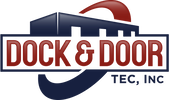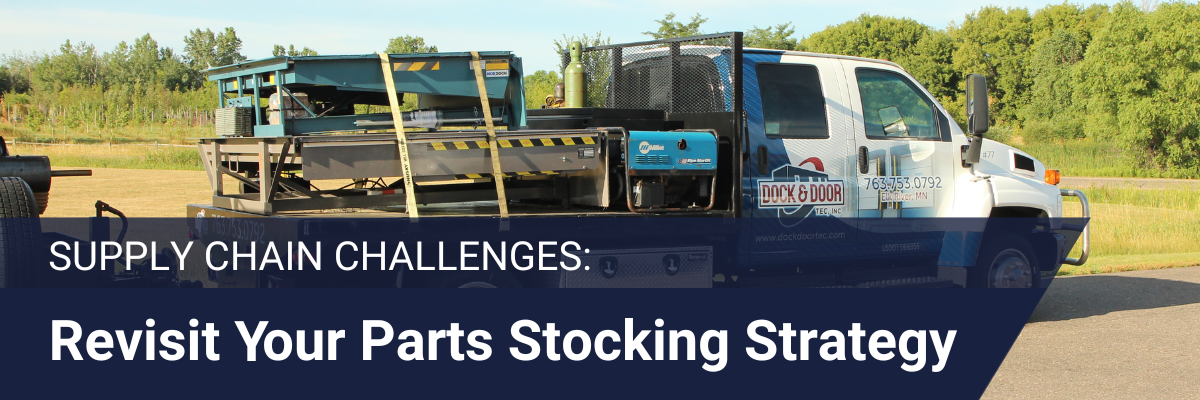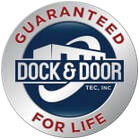|
Yes! Cost is a real factor when replacing or repairing equipment in your facility. The upfront cost of a hydraulic leveler or a hydraulic conversion will exceed the cost of a mechanical leveler or parts replacement type of repairs. However, the cost of ownership is reduced, and the overall lifetime cost of a hydraulic leveler is LESS than a mechanical leveler. Why?
Contact us today to see if a Hydraulic Conversion makes sense for you, your facility and/or your employees.
The conventional thought process around the loading dock area has seen a conceptual shift in thinking over the past several years. Many of our clients have changed over from mechanical levelers to hydraulic, either via equipment replacement or a hydraulic conversion. With a hydraulic conversion we take the springs, levers, brakes, and chains out and replace them with hydraulic components. Why?
In discussing this with clients, there were many reasons, but three of them were shared by all.
We know retaining and attracting employees is a challenge, so attention to both big and small issues is important. Providing employees with safe, reliable tools which allow them to work safely and confidently is what they’re looking from you as their employer. Not sure where to start? Request a facility needs assessment. Oftentimes the overall lifetime equipment cost isn’t considered at the time of purchase. It’s common to see that within an industrial facility, equipment is accepted with only “inferior” components rather than “optimal” at the time of purchase and installation. Unfortunately, “inferior” components result in more service calls and downtime. With today’s supply chain challenges this issue is magnified, not only through inflation, but through limited supply of components and parts.
Let’s take the sectional door for example (it’s the most common dock door in the Midwest). Facilities oftentimes install 2” rollers and track because they are less expensive upfront than 3” rollers and track. However, the 3” roller can never “pop out of the track” unlike a 2” roller. So even though the initial cost for the 3” roller/track may be more, it ultimately costs less with reduced downtime, safety risk, service calls, parts failure, and operating/ownership costs. When it comes to docks, we’re seeing a shift towards converting mechanical dock levelers to hydraulic operated dock levelers for a handful of reasons:
There are certainly many more examples to share like the two above. Bottom line? Make sure your equipment contains optimal components and is suited to your facilities and employee’s needs. Then supply change challenges will no longer be a consideration. Click here to learn more about hydraulic operated dock levelers. Traditional wisdom may need to be put aside for now and for the near future. Utilizing lean or just-in-time best practices may flop when it comes to managing inventory on parts to keep your facility running. Ideally, you would rely on your supplier partner to stock and maintain adequate inventory to keep your docks & doors operational in the event parts fail. Ask yourself, have you had that conversation with them? Are they able to stock enough parts or source them quickly enough to keep your downtime to a minimum and prevent disruptions in your facility?
Suggestions:
Combining this strategy with our other four suggested strategies may be part of the solution you and your facility need to thrive. In today’s ever-growing corporate world, smaller independent dock and door distributors are appointed by larger companies. While there can be advantages to this for the client, there is one disadvantage, especially in today’s supply-chain challenged world. When manufacturer’s own the local distributor, the client’s choice becomes severely limited. Just because the manufacturer offers different models, this doesn’t truly provide the client with multiple choices as the intended applications for those door models are different. See part two of this series for the importance of correct equipment application.
Even if the “lead times” for new equipment are acceptable, what if there is a part failure and the part isn’t available? With high-speed doors and fire doors, this can be a larger issue as there is likely not an aftermarket option due to proprietary parts or regulations not allowing anything but OEM parts to be used. Partnering with a service and equipment supplier that can offer both the variety of multiple manufacturer choices and the ability to service multiple manufacturer brands will allow your facility to thrive in through supply chain challenges. What challenges are you facing with your facility? Schedule a call to see if we can help. |
AuthorVarious. Archives
August 2023
Categories
All
|
- Home
- About
- Career Opportunities
- Services
-
Equipment
- Dock Locks (Truck Restraints) >
- Fans & In-Plant Equipment >
-
Industrial / Commercial Doors
>
- High Speed Fabric Doors
- Security High Speed
- Rubber Doors
- Fire Door
- Rolling Steel
- Impactable Dock Doors
- Cooler / Freezer
- Fabric Roll-Up
- Impact / Traffic / Bump
- Overhead / Sectional Doors
- Operators / Activation
- Air Curtains / Screen & Bug Doors
- Strip Doors
- Door Entrapment Protection
- Door Protection
- Overhead Door Upgrades
- Loading Dock Levelers & Lifts >
- Loading Dock Seals & Shelters >
- OEM & Aftermarket Parts
- Safety / Energy / Security / Employee Comfort >
- Yeti Snow Removal
- Markets
- Blog
- Contact
Dock & Door Tec
Serving Minnesota, Wisconsin, Iowa, North Dakota & South Dakota
Serving Minnesota, Wisconsin, Iowa, North Dakota & South Dakota


 RSS Feed
RSS Feed
